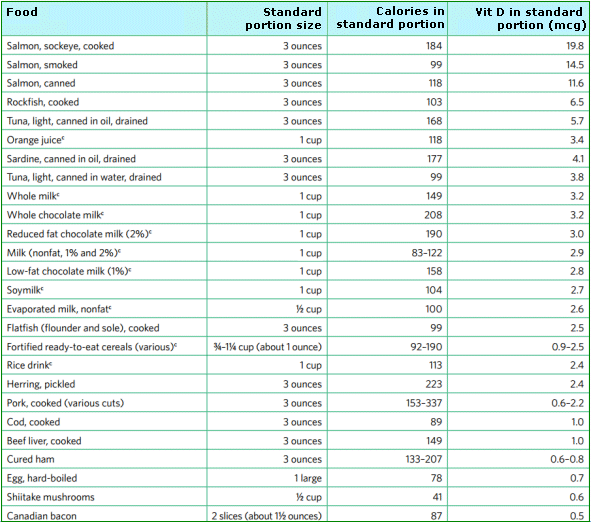Calories and Vitamin D in Standard Portions
Vitamin D has been found to help prevent broken bones in seniors. When in retirement it is important to follow a proper diet that includes appropriate doses of vitamin D.
From the USDA/USDHHS Guidelines: “Adequate vitamin D status is important for health. Extreme lack of vitamin D (i.e., vitamin D deficiency) results in rickets in children and osteomalacia(softening of bones) in adults. Adequate vitamin D also can help reduce the risk of bone fractures. Although dietary intakes of vitamin D are below recommendations, recent data from the National Health and Nutrition Examination Survey (NHANES) indicate that more than 80 percent of Americans have adequate vitamin D blood levels. Vitamin D is unique in that sunlight on the skin enables the body to make vitamin D.”
“In the United States, most dietary vitamin D is obtained from fortified foods, especially fluid milk and some yogurts. Some other foods and beverages, such as breakfast cereals, margarine, orange juice, and soy beverages, also are commonly fortified with this nutrient. Natural sources of vitamin D include some kinds of fish (e.g., salmon, herring, mackerel, and tuna) and egg yolks, which have smaller amounts. It also is available in the form of dietary supplements.”
“The RDAs for vitamin D, which assume minimal sun exposure, are 600 IU (15 mcg) per day for children and most adults and 800 IU (20 mcg) for adults older than 70 years. As intake increases above 4,000 IU (100 mcg) per day, the potential risk of adverse effects increases.”

Full USDA/USDHHS guidelines can be found here.
